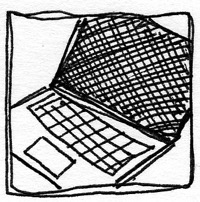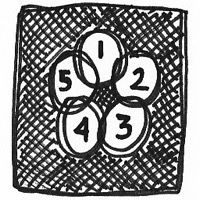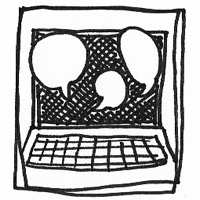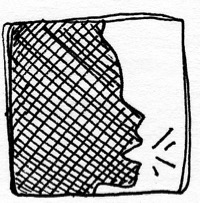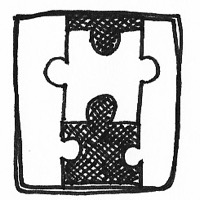Nearly a decade ago, in the fall of 2012, Tiffany Bourelle and Andrew Bourelle developed an online curriculum for the University of New Mexico's first-year composition courses. Called eComp (short for Electronic Composition), the program focused on multimodality, included embedded online writing tutors, and emphasized student reflections as part of the learning process. The courses that fall under the eComp umbrella are ENGL 110 and 120, the two-course composition sequence at our university. As the program gained momentum and more students enrolled, the need for the development of an online ENGL 219, the university's introductory technical communication courses (called "Technical Writing"), became clear. Bourelle and Bourelle began building an online technical communication program, now called eTC (Electronic Technical Communication). The first three eTC classes were piloted in Fall 2013, and the program has grown every semester since. The eTC classes are now the most in-demand of our English Department's online offerings.
The principal goal of eTC courses is to provide a rigorous technical communication class that emphasizes multimodal literacy, heavy process, and student reflection. The eTC courses are designed to include three major projects, followed by an electronic portfolio. For the three major projects (identified in the syllabus linked here), instructors have the choice among genres featured in our textbook, Technical Communication Today by Richard Johnson-Sheehan (2012). These include instructions, technical descriptions, analytical reports, and proposals. Each assignment must have some multimodal component. For example, students regularly create instructions in video form; analytical reports adhering to the principles of design and featuring tables, charts, illustrations, or other graphic elements; and proposals that included a voiceover-recorded PowerPoint or Prezi presentation (as if the students were presenting the information before a real decision-making body) accompanied by a multimodal public service announcement related to their solution. The multimodal elements help students understand the importance of the rhetorical situation as they must consider their audience, purpose, and what affordances are provided by different mediums and modes.
For each of these three projects, students are required to participate in three rounds of feedback. The first round involves peer review, the second round of feedback comes from instructional assistants in the course, and the final round is from the instructor. The instructional assistants, or IAs, either come from CAPS (Center for Academic Program Support, the university's tutoring center), or from an upper-division pedagogy course that teaches English majors how to give facilitative feedback to students' multimodal projects in the online settings. The IAs are not meant to replace the instructor's feedback, but, instead, the IAs are there to guide students during the revision process. They also participate in the discussion boards and respond to students, helping build community in the online environment. Preliminary research based on an assessment of our eComp courses suggests that the IAs also help students acquire multimodal literacies specifically, indicating that the embedded tutoring we offer provides an important service for our program.
In addition to the major projects, students in eTC ENGL 219 participate in weekly discussion boards about the material covered in the course, reading responses based on case studies from the textbook, and quizzes covering the content from the assigned chapters. Students, therefore, have multiple opportunities to interact with the material covered, discussing the information with instructors and classmates, as well as completing assignments that measure their level of understanding. Three major projects, which exercise foundational genre and rhetorical skills in the TPC field, and a final portfolio (the prompt for which is available here) constitute the majority of the points for the classes, but students complete other assignments every week. These smaller assignments are meant specifically to help students with the larger projects, providing necessary scaffolding. For example, when discussing the principles of design in preparation for making recorded proposal presentations, students are asked to share practice PowerPoint presentations and discuss how they use balance, alignment, grouping, consistency, and contrast (Johnson-Sheehan, 2012). These discussions help the students prepare their final proposal projects.
At the end of the semester, students are also asked to create a professional electronic portfolio (see above link to portfolio prompt), wherein they showcase revised versions of all of their projects along with a resume and application letter, as if they were developing the portfolios for potential employers. Created using Google Sites or Weebly (at the instructor's discretion), the portfolios are set up as professional webpages and students also write reflections on course outcomes, which incorporate multimodality and rhetoric, or, more specifically, the rhetorical canons.
All of these course components combine to support students' development of skills across the rhetorical canons. However, given our program's commitment to instantiating multimodal learning in every assignment opportunity, we particularly emphasize the canon of Memory, with a focus on reflection, as appropriately suited to facilitating learning in a TPC course that requires multimodal outputs. Hearkening Andrew Bourelle, Tiffany Bourelle, and Natasha Jones (2015), our approach in designing this course was "to take a broader view of the canon of memory, emphasizing learning, reflection, and metacognition" (p. 320). Our work here expands on the work of these scholars, who suggested that students feel that the "metacognitive aspect of the memory canon would help them retain skills considering multimodality" (p. 320). While these authors focused on all five canons, our study targets (primarily) one, in order to answer the question: How does a metacognitive, reflection-heavy approach to teaching foundation-level online TPC students benefit students in recognizing what they learned as members of the classroom community? Further, do they understand how these learning skills prepare them to complete future projects and to enter a larger community of future technical communicators? As our evidence shows, students exhibited metacognitive capacity, connected meaningfully with a community of peers, and expressed a belief in the transferability of these skills to other in-course and professional communication contexts.


